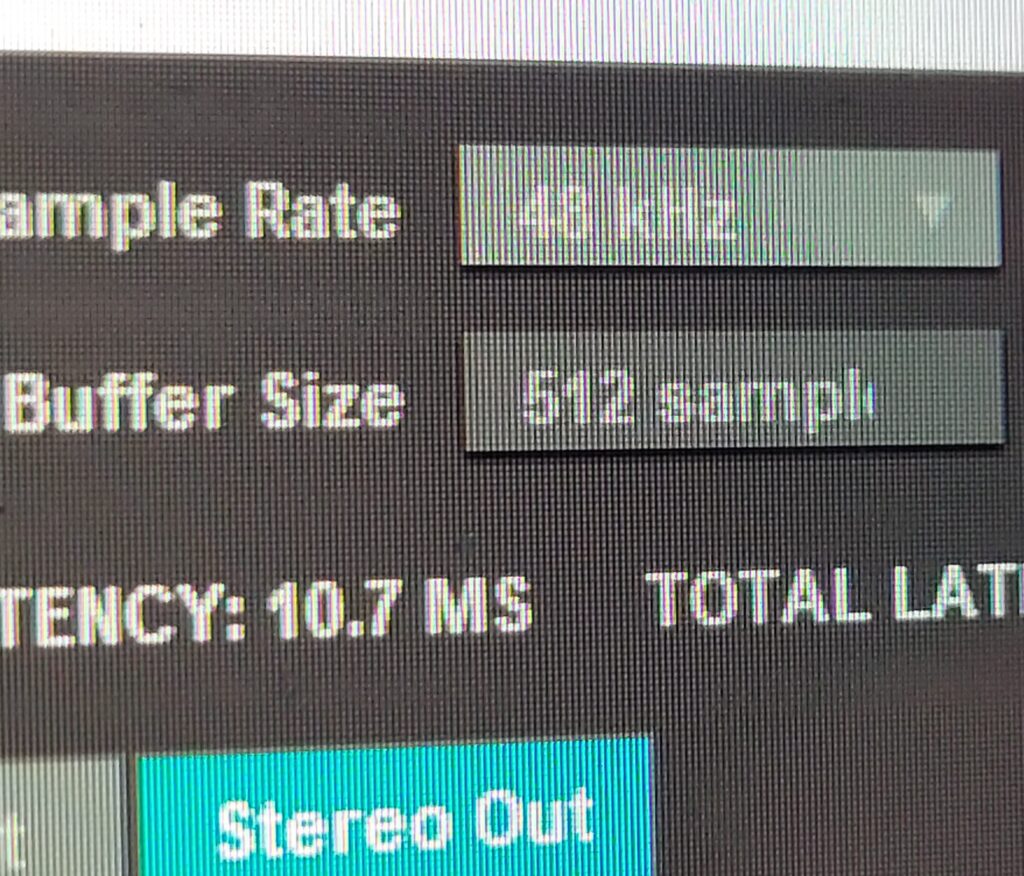Sometimes you get it right in some ways and not in others.
When you’re dealing with digital audio recording live, it is extremely important to have your capture system optimized and up 100% of the time without the possibility of dropping out. There are a set of settings, and conditions that must be present when facing a live performance whose audio is to be captured. If any of them are not set in their optimal settings, dropouts can occurr and ruin an otherwise good recording.
Sample Rate is akin to refresh rate – it is the number of samples being played back every second and bears some weight on the overall quality. How much or how little is something that has been discussed to its logical end on certain audio recording forums, and is in general not hugely important, other than its relationship to file size. Some devices sound better at different sample rates, and so preference should lead the way when choosing a sample rate, not the highest number. This setting is one that if set wrong, is a show stopper. In the context of a computer connected to a multitrack device, if the sample rate do not match on both the computer and the device, audio will not flow and software will error.
Bit Depth is essentially the amplitude headroom. Generally more is better. 24 bit , thats available on all digital devices at this point, is a great deal of dynamic range, but more modern 32 bit float converters offers something different and clearer to my ears. This too is a setting that if set differently on two connected devices, is a total show stopper.
Buffer Size is one that has bitten me more times than i’d like to admit. Even on modern insanely advanced processors, that are capable of unbelievable latencies, Buffer Size can cripple the flow of data if it is too small, and if it is too big. During the pandemic I started a live music show to air on the internet called Brain Fog, and in the first handful of episodes, I had this nagging noise and sync issue that at random intervals would drop a different amount of audio from ever being captured. it sounds like a pop but really was an absense of data leading to two samples becoming adjacent that were supposed to have several samples between them. I thought it was a computer-console (Midas M32) sync issue, but all of my fixes were unsuccessful. I checked on all the things – I was not using any usb hubs, so the console-pc connection wasnt bottle necking- I wasn’t running any other programs, and had a good external ssd with plenty of space. But I kept running into this pop sync issue. And the thing that made it so confusing is, the noise and sync were only on playback, they did not happen when the signals were live and recording was ongoing. So that made me realize it was a recording problem specifically.
After dealing with this little bug for far too long, I checked my audio settings in the software I use to capture live signals, and to my surprise, I was set to a buffer size of something crazy low like 8 or 16 samples. Because of the incredibly tiny buffer size, the audio capture was getting stuck at the processor, unable to keep up with the demands of the data coming in from the analog>digital converters. After adjusting to something more reasonable like 512 sample buffer, my machine sighed a sigh of relief, and my recordings stopped experiencing dropouts, restoring my audio system to a stable reliable capture.
The combination of dropping out data, creating a sync mismatch, and the audio glitch that arises from this, are not mistakes or phenomena that can be fixed in the mix. The random nature of this glitch and the missing data, means you are stuck with the issue and it will be printed in the audio until its cause is resolved. It isn’t a show stopping problem, but it is one that can essentially destroy a perfectly good recording.
